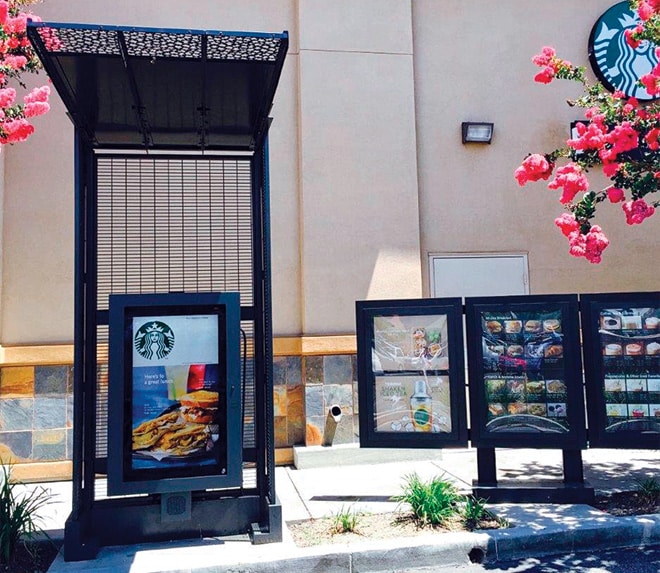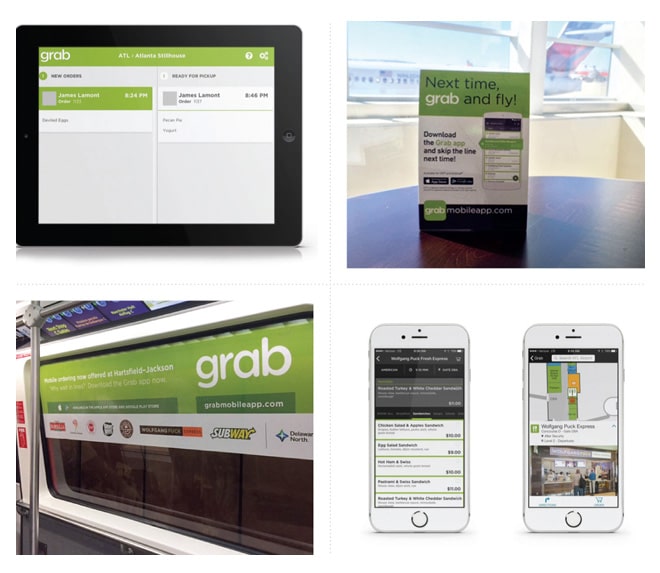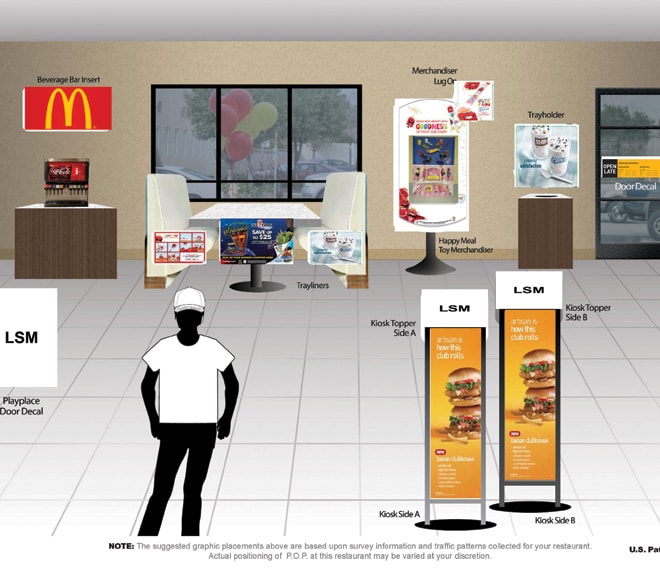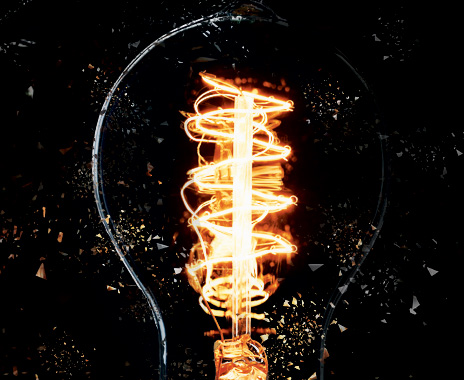Technology is sort of a funny word to use in the limited-service restaurant industry these days—or any industry, really. After all, what does technology even mean anymore? Does it only reference digital tools? Or does smart equipment count, too? What about online gadgets and gizmos?
These were questions that came up over and over as we judged this year’s Applied Technology Awards, the first time we’ve hosted the awards since 2010. Back then, it was a bit more clear-cut what types of winners we should honor; the awards were given to mobile ordering systems, digital menuboards, and POS-based loyalty programs, for example. But technology has come a long way in the last six years, and now even the simplest of tools in your kitchens and restaurants often incorporate some form of innovative technology.
We received hundreds of submissions for this year’s Applied Technology Awards, spanning a wide variety of uses, from kitchen equipment and packaging innovations to furniture fixes and software systems. There were countless examples of mobile-ordering platforms and point-of-sale providers—most of which were deserving in their own right. The power and potential of restaurant technology in 2016 is remarkable. But we wanted to pinpoint the truly original technology out there that is rethinking the limited-service restaurant operation.
With that said, here are the eight Applied Technology winners between two categories: Customer-Facing Technology and Crew-Facing.
CUSTOMER-FACING TECH
The winner:
GDS Inc.’s 46-Inch Full Outdoor QSR LCD Display
Where it’s used: Starbucks
 What it does: The largest installation of a large-format outdoor digital display is being rolled out to all U.S. Starbucks locations with drive thrus, offering a sign solution that withstands rain, snow, heat, cold, and everything else Mother Nature throws at it. But the display also helps Starbucks re-create the face-to-face barista experience that exists inside the stores; to go along with an order-confirmation screen, GDS’ display shows a live video feed of the barista taking the order, enhancing the customer interaction.
What it does: The largest installation of a large-format outdoor digital display is being rolled out to all U.S. Starbucks locations with drive thrus, offering a sign solution that withstands rain, snow, heat, cold, and everything else Mother Nature throws at it. But the display also helps Starbucks re-create the face-to-face barista experience that exists inside the stores; to go along with an order-confirmation screen, GDS’ display shows a live video feed of the barista taking the order, enhancing the customer interaction.
Why it won: The enormous outdoor display accomplishes two things that have long been elusive in the limited-service industry: It’s dynamic and attractive, but also tough enough to install in any location. More impressive, though, is the Facetime-style feed that creates a personal connection between customer and employee, allowing Starbucks to engage on a more personal level with guests.
The winner:
iPourIt Inc.’s Self-Serve Beer & Wine Tap System
Where it’s used: zPizza
What it does: Self-serve platforms work for soft drinks and frozen yogurt, so why not alcohol? This system puts the taps in front of restaurant guests, letting them choose their own beer or wine and pour exactly as much as they want. Digital integration lets restaurant owners charge by the ounce and customers track and rate the beverages they’ve selected.
Why it won: Beer has especially enjoyed a renaissance in the last decade, and more than 4,000 craft breweries are now in operation across the U.S. With so many options to choose from and customer demand at an all-time high, it can be an overwhelming operation for restaurant owners to keep up with. Not only does the iPourIt system allow operators to be more efficient and hands-off with their alcohol programs, but it also gives them a fun and interactive way to introduce alcohol to their in-store experience.
The winner:
Delaware North’s Grab Airport Mobile Ordering
Where it’s used: Atlanta’s Hartsfield-Jackson International Airport
 What it does: This mobile ordering platform lets customers flying through Atlanta search, order, and pay for meals at participating locations in their terminal, all while they’re standing in the security line or waiting to get off their airplane. The platform’s developers are in talks
What it does: This mobile ordering platform lets customers flying through Atlanta search, order, and pay for meals at participating locations in their terminal, all while they’re standing in the security line or waiting to get off their airplane. The platform’s developers are in talks
with several airlines to integrate the
program into their apps, allowing travelers to use airline reward points on meals.
Why it won: Mobile ordering is all about convenience, giving customers the option to seamlessly move through the purchasing experience from the comfort of their home or workplace. But where else is convenience more craved than in an airport? The Grab Airport Mobile Ordering system makes at least one stressful airport decision—where and what to eat—a breeze.
The winner:
HME’s Vuze Table Location System
Where it’s used: McDonald’s
What it does: The Vuze tool gives quick-service operators the option of including table service—kind of. When guests place their order, they receive a guest tag from the cashier or kiosk that tracks their location and order time. Radio-frequency identification (RFID) technology then tells a server where exactly the guest is, whether they’re seated or on the move, so their order can be delivered right to them.
Why it won: Service styles are becoming increasingly hazy with the lines between quick and full service often blurring. As more fast casuals offer enhanced service styles, quick-serve brands especially are pressured to add a new service element for guests that is quick, efficient, and comfortable. The Vuze system offers all of those things while also tracking order times and volume, giving operators insights into the speed and quality of their operation.
The winner:
Domino’s Emoji Ordering System
Where it’s used: Domino’s
What it does: This ordering system from the pizza delivery leader takes all of the hassle out of the ordering process. All guests need to do is set up an online account through Domino’s and then save an “easy order,” and from then on they will receive that order any time they tweet or text the pizza emoji to the brand.
Why it won: Is it novel? Sure. But Domino’s Emoji Ordering System also cleverly lets customers order and interact with the brand where they spend an increasing amount of every day: on their smartphone. Besides, who wants to go through the trouble of dialing a phone number anymore?
[pagebreak]
CREW-FACING TECH
The winner:
Newk’s Eatery’s Online Academy
Where it’s used: Newk’s Eatery
What it does: The Mississippi-based fast casual’s Online Academy is an eLearning platform that educates both hourly employees and area directors about the culture, standards, and core processes that drive the brand. Through their computer or mobile devices, Newk’s employees receive easy access to interactive and digital learning content, including training, course work, tests, and videos that nurture professional development.
Why it won: With turnover so high across the limited-service industry and with younger employees increasingly seeking jobs that provide an opportunity to do meaningful work, brands must find ways to invest in the education and culture of their workforce. Newk’s Online Academy offers a hands-on, proprietary system that gives employees a holistic training experience while also letting management teams have direct look at the progress of their staff. And the fact that Newk’s Online Academy isn’t restricted to hourly employees means that the fast casual has an opportunity to continually invest in all employees as they rise up the ranks, promoting the company as a place for a career—not just a job.
The winner:
S2K Graphics’ P.O.P. Placement Software Program
Where it’s used: McDonald’s
 What it does: This point-of-purchase (POP) software program creates full-color, realistic renderings of each individual restaurant, including all variability and nuances expected of a brick-and-mortar site. It then prioritizes merchandising elements in a franchisor’s monthly POP kit—including posters, decals, banners, and more—and graphically places them in the rendering, maximizing the potential of each piece within the dining room, front counter, drive thru, and exterior of the store.
What it does: This point-of-purchase (POP) software program creates full-color, realistic renderings of each individual restaurant, including all variability and nuances expected of a brick-and-mortar site. It then prioritizes merchandising elements in a franchisor’s monthly POP kit—including posters, decals, banners, and more—and graphically places them in the rendering, maximizing the potential of each piece within the dining room, front counter, drive thru, and exterior of the store.
Why it won: Placing POP materials has never been an exact science, but this software system is about as close as it comes. S2K Graphics’ patented product improves POP execution, eases installation time, and reduces restaurant clutter, all helping the restaurant operator maximize her marketing materials. It’s a first-of-its kind product, and the idea of creating a virtual rendering of a restaurant to toy around with these kinds of design elements is, well, pretty cool.
The winner:
SCA Americas’ Tork Xpressnap Drive Thru Napkin Dispenser
Where it’s used: Two major quick-service chains
What it does: The Xpressnap Drive Thru Napkin Dispenser delivers a set quantity of napkins with the push of a button. Drive-thru employees who have been long used to grabbing fistfuls of napkins as they try to quickly serve orders out the window can now automatically dispense single or multiple napkins with ease.
Why it won: Speed and accuracy continue to be top of mind for operators with a drive thru, and the Xpressnap Dispenser removes at least one headache by automating the napkin-dispensing process. In addition, this dispenser helps brands reduce waste and save on back-of-house costs by not sending an inordinate amount of napkins out the window.









